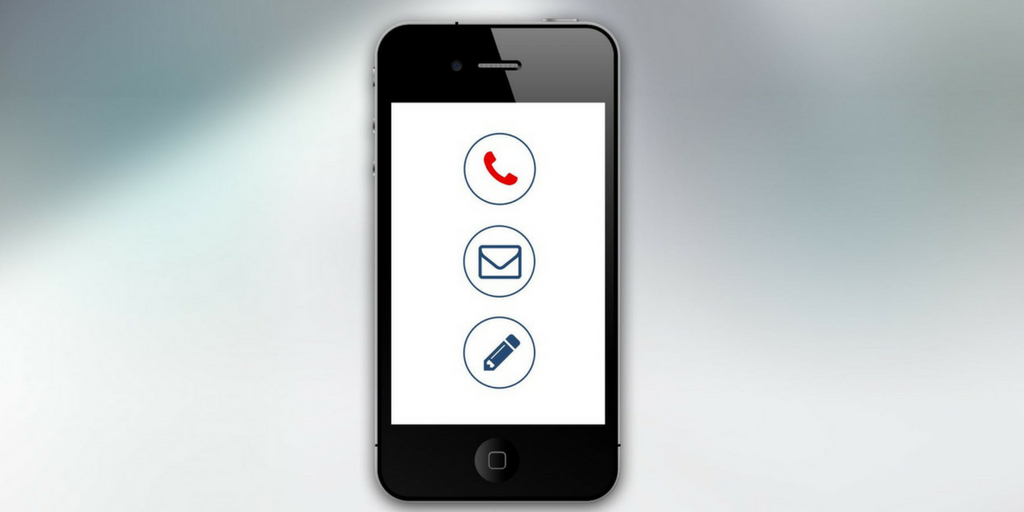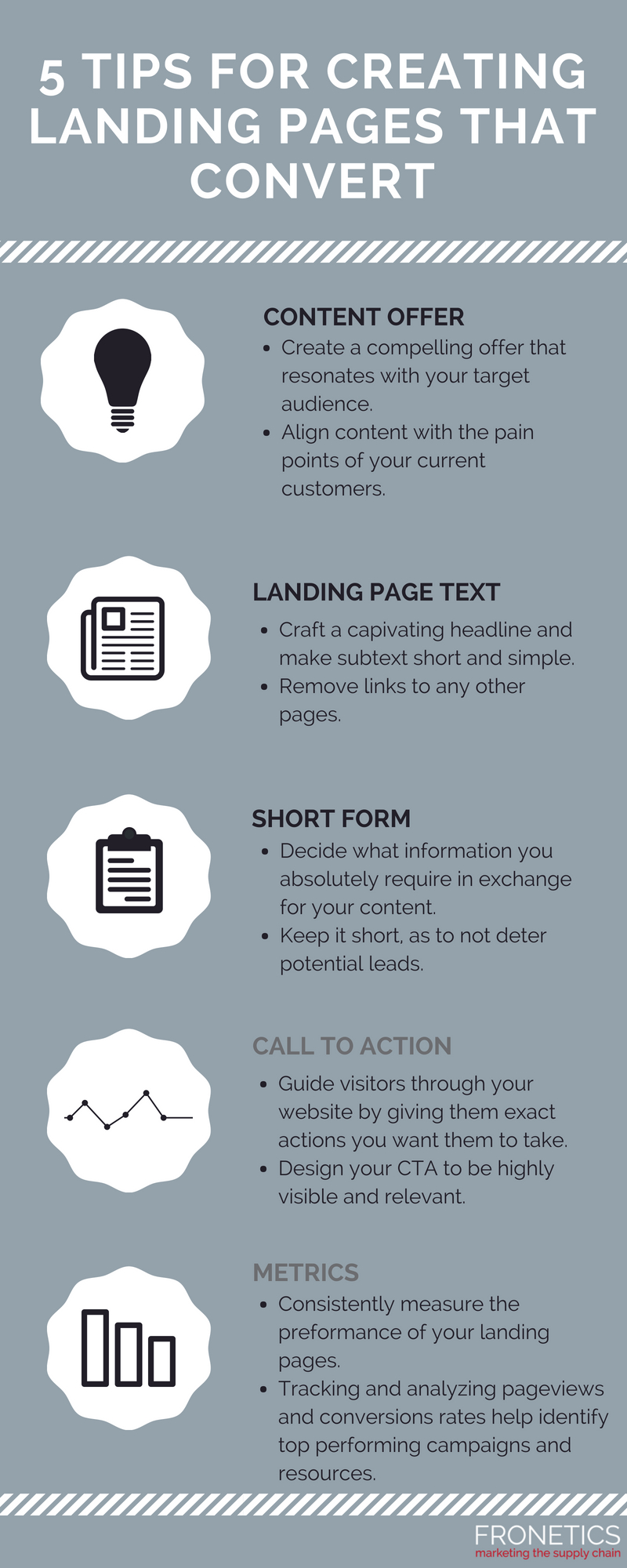
by Fronetics | Sep 4, 2018 | Blog, Content Marketing, Logistics, Marketing, Social Media, Supply Chain
Live video is a powerful tool that can help your supply chain business grow its social media footprint, build brand awareness, and generate leads.
Live video is the super-hot new thing when it comes to generating leads and selling. But the supply chain has, so far, been hesitant to embrace it whole-heartedly as a marketing tool.
I can understand how you might find this new content format too “young” or consumer-facing for B2B sales. But at Fronetics, we think if done right, live video can be really effective.
What is live video?
Maybe you’ve gotten a notification on Facebook to let you know that your nephew is live streaming his piano recital, or a college friend is “live” at a wedding. But, let’s face it: Not many supply chain companies are using live video in their social media marketing. So you may not have thought about it in a professional context.
This “it’ trend in social media has really taken off in the past two years, and marketers are starting to jump on the bandwagon. With today’s emphasis on corporate transparency and putting a real, human face behind business social media accounts, live video is a perfect fit. In fact according to the 2017 Social Media Marketing Industry Report, 61% of marketers plan on using live video services, and 69% are interested in learning more about it.
[bctt tweet=”61% of marketers plan on using live video services, and 69% are interested in learning more about it, according to the 2017 Social Media Marketing Industry Report.” username=”Fronetics”]
These are the 4 live video platforms you should be aware of.
1. Facebook Live
Facebook’s live streaming platform lets you broadcast for up to 90 minutes per session, and notifies your audience that you’re streaming live. It also allows viewers to comment and react during your broadcast, and you can read and respond to their remarks immediately.
2. Periscope
Twitter’s answer to live video, Periscope has more than 10 million users, and lets user live stream from their mobile devices and push those streams directly onto Twitter.
3. Instagram Live
Instagram lets users connect to their followers in real time, through its Stories feature. Like Facebook, Instagram lets viewers add real-time comments that are visible to you and the rest of your audience.
4. YouTube Live
Online streaming video juggernaut YouTube makes it incredibly easy to aim, shoot, and post live video.
How to use live video
Michael Stelzner of Social Media Examiner recently interviewed income strategist and Facebook Live-guru Nicole Walters on the Social Media Marketing Podcast. Walters gave listeners clever tips for using live video to build a following and generate leads. We recommend giving the podcast a listen, but read on for our key takeaways.
Walters advocates for spontaneity in live video but suggests having a format or framework to give you structure and ensure that you’re sticking to your goal of generating leads. Her format is in three parts:
Part One: The Opener
In your introduction, which should be about 30-45 seconds, Walters suggests starting with your name, website, and a brief sentence to give your audience an overview of who your business is and what your video is about. Next, be sure to welcome your audience, perhaps with a special shout-out to new viewers, as well as regulars. Walters also encourages viewers to share her video and to interact with her as she broadcasts.
Part Two: Instructional Content
This is the meat of your video and typically lasts up to 30 minutes. Start by introducing the topic you’re presenting on and why it’s important. Walters also suggests encouraging viewers to take notes, with the rationale that notetaking leads to engaged viewers. If you’re launching a product or service (a great use of live video), you’ll want to cover the need you’re answering with your launch and how your product or service will solve it.
Walters points out that while she prepares extensively for her broadcasts, she avoids reading directly from a piece of paper, as it could easily get impersonal and boring. Instead, she gives herself a cheat-sheet of bullet points to keep her on track.
Part Three: Call-to-Action
This is the final stage of your live video, in which you send your viewers to a page where they can either pay or submit information to receive additional, high-value content (like e-books, webinars, etc.). Walters might say, “If you love this and want to dive in and get the details you need, then head over to NicoleWalters.tv. If you click the center of the page, you’ll find the product… I’ll be right here if you have questions. But come back and tell me you grabbed it.”
Live video offers all kinds of potential value for supply chain marketing. From customer engagement and feedback to transparency and brand awareness, this is a tool for the future of supply chain marketing.
Related posts:


by Fronetics | Jul 23, 2018 | Blog, Content Marketing, Logistics, Marketing, Social Media, Strategy, Supply Chain
Part four in our series on effective lead generation walks you through how to create a form that converts leads, getting you the information you need without driving prospects away.
Welcome to the last installment of our series on effective lead generation and nurturing. Now that you know how to:
- Create and package a valuable offer
- Add calls-to-action that work
- Design a landing page that converts
So, what’s next? The final step in the lead generation process, and one that’s too often overlooked and undervalued, is designing a form that gets you the information you need.
It’s all in your form
When prospects get to your landing page, they’ve indicated that they’re interested in your offer. Ideally, what they find on your landing page has reaffirmed their interest. Now it’s time for them to provide you with what you’re looking for in return for the value you’re offering them: their contact information.
The information you glean from your prospects will feed into your Customer Relationship Management (CRM) or other lead management database. This means that you should essentially be retrofitting your form based on your email segmentation criteria. In other words, you want to get just the right information from your prospects that will allow you to tailor your lead nurturing to best suit their needs and interests.
[bctt tweet=”An effective form strikes the delicate balance between acquiring all the necessary information and keeping the willingness and attention of your visitors.” username=”Fronetics”]
Your head might be filling with visions of long and comprehensive questionnaires — not so fast. If you make your form too long or involved, prospects will abandon it out of impatience and frustration, or feel that you are exploiting them for more time or information than they’re willing to provide. An effective form strikes the delicate balance between acquiring all the necessary information and keeping the willingness and attention of your visitors.
3 characteristics of forms that convert leads
For this last and crucial step in your lead generation strategy, it’s all about capturing leads. So, what makes for an effective form?
1. Find the length that works for you.
Conventional wisdom would have you believe that the shorter your form the more leads you’ll get, whereas the longer the form, the better quality (though fewer) leads you’ll get. But that’s a bit of a simplistic and defeatist way of looking at it.
We think you can have your cake and eat it, too. The key is to design your form with your email segmentation criteria in mind.
Ask as few questions beyond the basics as possible to get you precisely the information you need. Your goal is richness of information, as opposed to lengthy, detailed questions. For more, check out HubSpot’s guide to creating a form.
2. Don’t frighten them away.
It may seem counterintuitive, but you should avoid using the word “submit” on your form. Nobody likes the idea of “submitting” their information.
Instead, use a phrase that demonstrates that your prospect is about to get something that they want by supplying their information. For example, “Get it free,” or, “Download now,” emphasizes what the prospect will receive, rather than what they will be giving.
3. Protect their privacy.
In the current climate, we’re all thinking more and more about how our data gets collected and shared. Make sure your prospects know that you’ll be a good steward of the information they provide you.
Add a privacy message or link to your privacy policy, indicating that their email or contact information won’t be shared or sold.
Creating forms that convert leads is the final step — though one of the most crucial — in effectively turning website visitors into prospects. If you can manage to create a valuable offer, entice visitors with a call-to-action, convince them to convert on a landing page, then present a form that encourages them to complete it (rather than drives them away), then you’ve done your job as a marketer.
Related posts:


by Fronetics | Jul 19, 2018 | Blog, Content Marketing, Logistics, Marketing, Social Media, Strategy, Supply Chain
In part three of our series on effective lead generation and nurturing, we walk you through the components of effective landing pages that convert visitors to leads.
If you’ve been keeping up with our four-part series on effective lead generation, you should be up to speed on creating a valuable offer and a call-to-action that works. The next step in a finely tuned lead generation process is a landing page that converts.
Why does my offer need a landing page?
[bctt tweet=”Landing pages are crucial, and brands miss out on opportunities when they fail to optimize them. According to HubSpot, marketers see an average 10% conversion rate on landing pages — that represents a huge amount of missed opportunities.” username=”Fronetics”]
Landing pages are crucial, and brands miss out on big opportunities when they fail to optimize them. In fact, according to HubSpot, marketers have seen an average 10% conversion rate on landing pages — that represents a huge amount of missed opportunities. Brands that have it right, those that focus on designing for conversions, reap the benefits in big ways.
Your primary objective for a landing page is to get visitors to submit their contact information in exchange for the offer. At this point in the process, your potential customer has already engaged with your call-to-action, meaning he or she is interested in your offer. When they get to your landing page, everything they find there should affirm their choice to and assure them that the content they are about to download is going to be relevant, interesting, and valuable.
Designing landing pages that convert
So what are the hallmarks of a great landing page? Starting with the basics, your landing page should briefly, simply, and clearly describe the benefits of your offer. It’s important that there be as few distractions as possible. For example, make sure the page doesn’t have a top navigation menu. Bonus points for including ways to share your offer on social media.
Additionally, you should make sure that your landing page doesn’t include links to other things on your website, as they can distract the lead and perhaps send them somewhere else on your website where they can find the information you’re presenting in your offer.
As you design your landing page, keep this checklist in mind:
- Is it clean, organized, and clearly presented?
- Is there any ambiguity about where or how leads should enter their information?
- Does it describe the benefits of my offer?
- Is it free of extraneous or distracting content or links?
- Is it mobile-friendly?
- Does it contain easy ways to share on social media?
If you follow these tips for landing pages that convert visitors to leads, we’re confident you’ll start to see an uptick in your website conversion rate almost immediately.
Related posts:


by Fronetics | Jul 16, 2018 | Blog, Content Marketing, Logistics, Marketing, Strategy, Supply Chain
Updated December 11, 2024
Whether you’re selling manufacturing solutions, logistics services, or technology, your supply chain lead generation strategy must address specific industry pain points like inventory optimization, transportation costs, and supplier relationship management.
While content marketing works across industries, supply chain decision-makers have unique needs. Procurement managers, logistics directors, and supply chain VPs face complex challenges:
- Multi-stakeholder buying committees
- Long sales cycles (often 12-18 months)
- High-value purchasing decisions
- Complex technical requirements
- Regulatory compliance concerns
- Integration with existing systems
Let’s explore how to adapt the four core components of lead generation specifically for supply chain audiences.
The 4 Essential Components of Supply Chain Lead Generation
1. Creating High-Value Supply Chain Offers
Supply chain professionals seek concrete solutions to operational challenges. Effective offers include:
Industry Reports:
- Annual logistics cost benchmarking studies
- Regional supplier capability assessments
- Port congestion and capacity forecasts
- Last-mile delivery performance analysis
Technical Resources:
- Warehouse automation ROI calculators
- Transportation management system comparison guides
- Inventory optimization modeling templates
- Supplier risk assessment frameworks
Educational Content:
- Supply chain sustainability certification programs
- LEAN logistics implementation playbooks
- Digital twin technology adoption guides
- Blockchain in supply chain webinar series
2. Supply Chain-Specific Calls-to-Action (CTAs)
Customize your CTAs to resonate with supply chain roles:
For Procurement:
- “Download Supplier Evaluation Template”
- “Access Vendor Management Toolkit”
- “Calculate Potential Sourcing Savings”
For Logistics:
- “Benchmark Your Warehouse Costs”
- “Map Your Distribution Network”
- “Optimize Your Fleet Performance”
For Supply Chain Technology:
- “Compare TMS Features”
- “Schedule WMS Demo”
- “Download Integration Roadmap”
3. Converting Landing Pages for Supply Chain Professionals
Design landing pages that address industry-specific concerns:
Technical Validation:
- Integration capabilities with ERP systems
- API documentation
- Security certifications
- Compliance standards met
Operational Proof:
- Industry-specific case studies (e.g., automotive, retail, pharmaceuticals)
- Performance metrics (e.g., inventory reduction, on-time delivery improvement)
- Implementation timelines
- ROI calculations
Social Proof:
- Logos of recognized supply chain brands
- Industry awards and certifications
- Partnership badges (SAP, Oracle, etc.)
- Client testimonials from supply chain leaders
4. Strategic Form Fields for Supply Chain Lead Qualification
Capture information crucial for supply chain lead scoring:
Company Profile:
- Annual freight spend
- Number of distribution centers
- Current transportation modes
- Manufacturing locations
- System landscape
Project Context:
- Current supply chain challenges
- Priority initiatives
- Decision timeline
- Budget range
- Required integrations
Role Information:
- Position in supply chain organization
- Purchase authority level
- Technology decision-making role
- Geographic responsibility
Supply Chain Lead Nurturing Strategies
Once you’ve captured leads, nurture them with industry-specific content:
Early Stage:
- Educational content about supply chain trends
- Industry benchmark reports
- Thought leadership webinars
Middle Stage:
- Technical specification sheets
- Implementation guides
- Customer success stories
Late Stage:
- Custom ROI analysis
- Pilot program proposals
- Integration assessment reports
Measuring Supply Chain Lead Generation Success
Track these key metrics:
- Lead-to-opportunity conversion by industry vertical
- Sales cycle length for different solution types
- Implementation success rates
- Customer lifetime value by segment
- ROI achieved by solution category
Next Steps in Your Supply Chain Lead Generation Journey
Over the coming weeks, we’ll explore advanced topics including:
- Supply chain buyer persona development
- Industry-specific content strategies
- Technical validation frameworks
- ROI calculation methodologies
Sign up for updates to get these insights and more on generating and nurturing qualified leads in the manufacturing, distribution, and logistics sectors.
Related posts:

by Fronetics | Jul 3, 2018 | Blog, Content Marketing, Logistics, Marketing, Supply Chain
Getting lots of web traffic but short on leads? Here are five tips to help create strong landing pages that convert visitors to leads.
We hear it all time: “My website is getting great traffic, but we’re not converting those visits to leads.”
We compare it to the Patriots getting the ball all the way down the field but then not being able to score a touchdown. Chances are your landing pages are the problem.
[bctt tweet=”We hear it all time: “My website is getting great traffic, but we’re not converting those visits to leads.” We compare it to the Patriots getting the ball all the way down the field but then not being able to score a touchdown. ” username=”Fronetics”]
Landing pages are a fundamental tool in converting website visitors into leads. They’re what convince your visitors that they absolutely must download your fabulous resource offer. Yet oftentimes they’re treated as the annoying little sibling to high-value content pieces — tagging along almost as if an after-thought.
In reality, landing pages have just as much, and possibly even more, importance than the content offer. What good is your best resource if your landing page doesn’t do its job? You don’t want people to just visit your website. You want them to take action while they’re reading your content.
Here are five tips for supply chain marketers who are looking to generate better conversion rates from their landing pages. These tips make it easy — and tempting — for visitors to take action.
Infographic: 5 tips for creating landing pages that convert

(Made with Canva)
Key takeaway
It comes down to basically one objective: Be clear about what you want your visitor to do on your landing page. All of these recommendations help to create a landing page that makes it easy — and beneficial — for visitors to take a specific action.
Once you’ve made adjustments to your landing page, don’t forget to test, test, test! Still not getting the conversions you’re looking for? Go back and continue to tweak. Soon enough, you’ll have solid landing pages that convert those visitors to leads.
Related posts:










